FORECAST REVIEW
The Gold Coast
Sustained population growth and a forecast shift from the greenfield development that has driven growth in recent years: in this update, we unpack these and other insights from our latest population forecasts for the Gold Coast region - the first in our South East Queensland series.
Forecast version 4.0.0
Released January 2022
As a region, the Gold Coast is a big place
Where many regions that we forecast are dominated by one type of dwelling (detached housing in greenfield developments or apartments in cities), the Gold Coast has a range of housing markets, and therefore attracts a variety of demographic profiles.
From the hinterland suburbs that act like typical greenfield areas on the urban fringes of cities around Australia to the high-density developments on the coastal strip that are unlike any areas we've forecast before in their capacity for development, the Gold Coast is a classic example of how the type of housing that's constructed in an area influences where people live within a region.
Key assumptions and findings
- The Gold Coast continues to enjoy sustained population growth driven by interstate and overseas migration
- There is increased development in high-density zoned areas along the coastal strip from Southport to Palm Beach
- The agricultural areas around Norwell remain a green wedge between Brisbane and the Gold Coast within the forecast period

Review commentary by Johnny Barnard
This review includes video commentary from Johnny Barnard, the lead forecaster with our Location Decisions team. Johnny has been forecasting, analysing, and mapping Australia’s urban changes since the late 1980s, completing projects to inform board-level decisions with the AFL, NRL, Stockland, Red Cross, and numerous education providers.
The National and State context
- Queensland is forecast to grow by 1.32 million people in the same time period, faster than the growth rate of Australia
- South East Queensland receives the lion’s share of that forecast growth
- The various regions of South East Queensland play a different demographic role and function
The Gold Coast isn't an island. As a place, it is interconnected with neighbouring regions of South East Queensland and Northern New South Wales. For this reason, before we were able to produce forecasts for the areas within the Gold Coast, we had to determine what proportion of Australia's, and then Queensland's, forecast growth should go to the Gold Coast.
Our ‘top-down’ forecasting process apportions forecast population for Australia to the States and Territories, then to the regions (SA4s) within. This discipline recognises that these areas are interconnected, while also reflecting the unique demographic profiles, patterns of migration and other factors that influence population change in each region. Our 'bottom up’ model then distributes this population to the ‘small areas’ within each region by matching the forecast population with available dwellings, which is how we can produce micro-geography forecasts that are designed to be aggregated into custom catchments.
For a complete overview of our State-to-SA4 forecasts, watch our recent webinar 'Queensland after Covid'.
Drivers of growth across South East Queensland
- The Gold and Sunshine Coasts are heavily reliant on interstate migration
- Overseas migration is a significant driver of population growth in Brisbane and the Gold Coast, though not to the same extent as in New South Wales and Victoria
- The Gold Coast does not attract population from the rest of Queensland
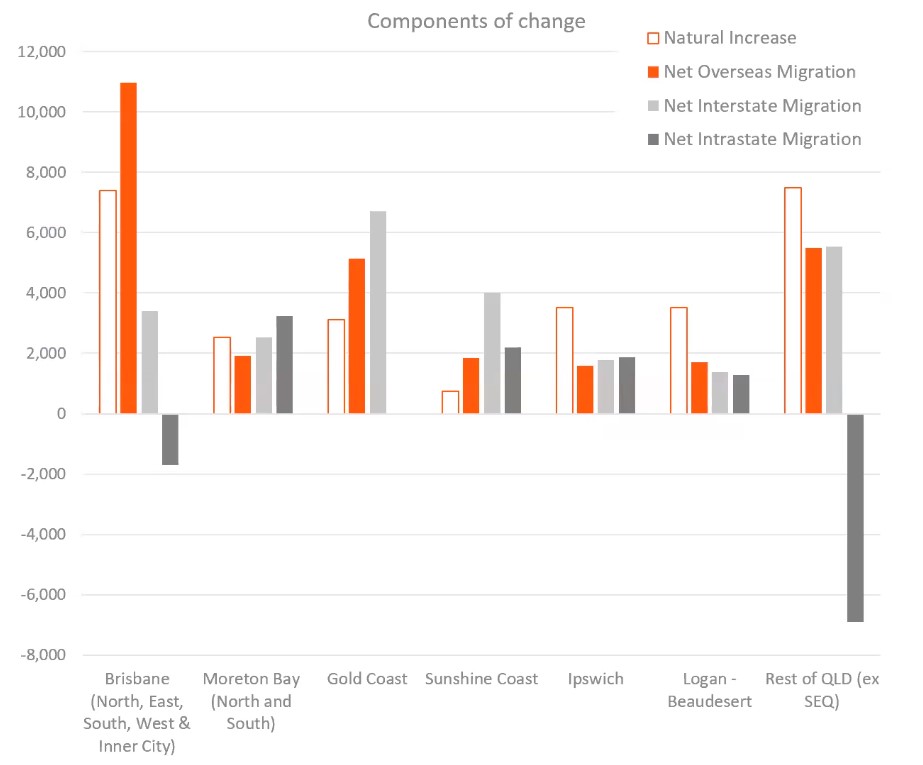

Since the 1970s, Queensland has been the beneficiary of a growing trend of interstate migration, typically at the expense of New South Wales. This trend has strengthened since Covid-19; with only three-quarters of data released so far, Queensland is on track to receive 30,000 net interstate migrants for the 2021 financial year.
Different regional roles and functions
The regions of South East Queensland each play a different role and function in terms of the population they attract, the housing markets they service, and the demographic drivers of population change in each area.
This demographic view of population drivers informs how we distribute the forecast population in age-specific cohorts to different regions of Queensland when we produce State to SA4 forecasts.
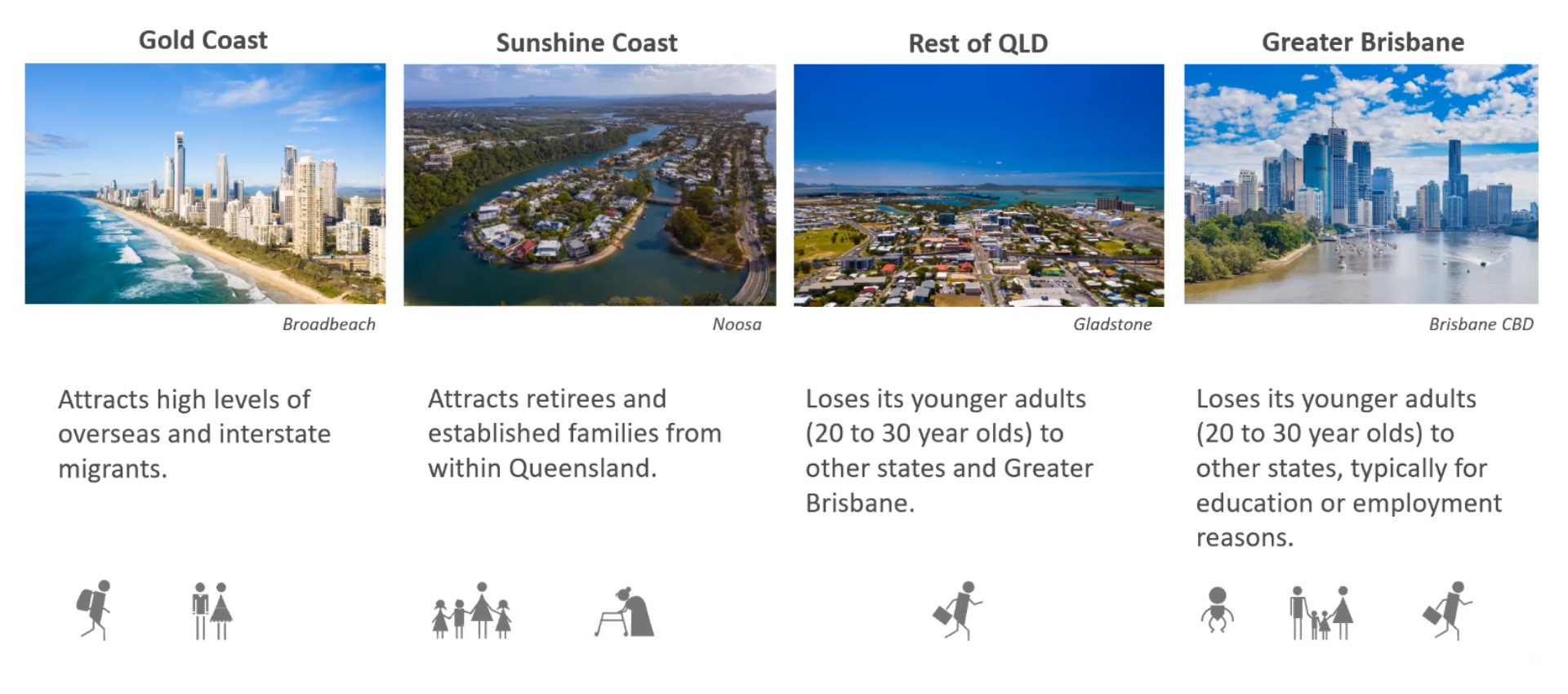
The Gold Coast, in particular, attracts high numbers of young adults and young families from interstate, compared to other regions of Queensland.
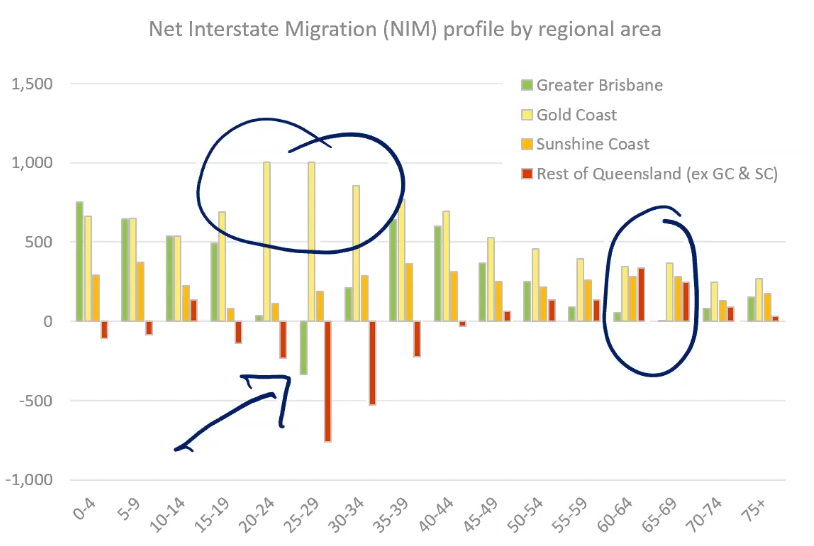
The Covid impact
Our forecasts for the Gold Coast account for the impact of border closures resulting from COVID-19. While the Gold Coast doesn't rely on overseas migration to the same extent as some parts of Victoria and New South Wales, it has been an important part of what's driven population growth in recent years, so has been accounted for in our forecasts.
As we haven't previously produced forecasts for the regions of Queensland, we can't conduct a pre- and post-covid comparison for analysis of as we have in other states to quantify the impact of the pandemic on the Gold Coast region. At the national level, we forecast Australia's population in 2041 will have 1.9 million fewer people than were forecast prior to the pandemic. Across the State of Queensland, we're forecasting 370,873 fewer people by 2041 than previously forecast.
This is caused by the immediate loss of population from the overnight border closures in March 2020, but is compounded by the fact many of those migrants would have been in family-forming age groups, so there is also a significant impact on the number of children who are expected to be born in the coming years. Our Demographic delays eBook goes into these impacts in more detail.
These macro-demographic impacts aren't evenly distributed across Australia, but disproportionately impact the areas that attract high levels of overseas migrants. As demographers, we use these patterns to apportion the population impacts of border closures in the top-down phase of our forecasting.
We assume a return to normal levels of Net Overseas Migration (NOM) in 2023, which is consistent with other sources including the Federal Treasury's Centre for Population.
Queensland is still forecast to grow
- From the early 1970s to the 2010s, Queensland grew at a faster rate than Australia
- The impacts of COVID are not felt as strongly in Queensland as they are in the rest of Australia
- Our forecast assumptions have Queensland returning to a 1% annual growth rate, growing slightly faster than Australia overall
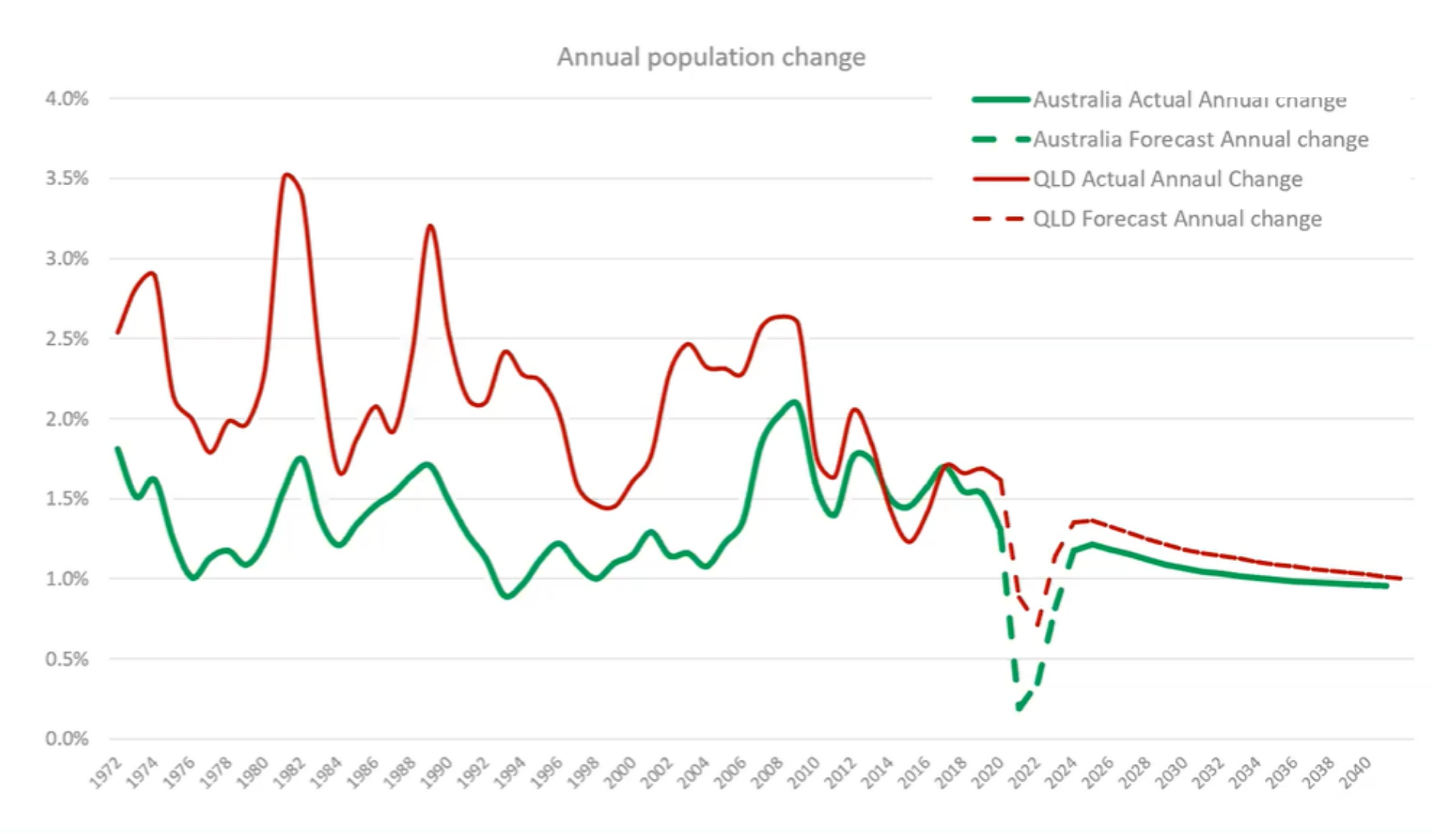
Why do we invest in extensive research into the timing and location of future residential development?
At the local level, the number and type of dwellings available determine where people of different age groups and household formations live within a region.
This is why we conduct detailed research using a range of sources to understand land use policy and both current and planned residential development activity to inform our micro-geography forecasts.


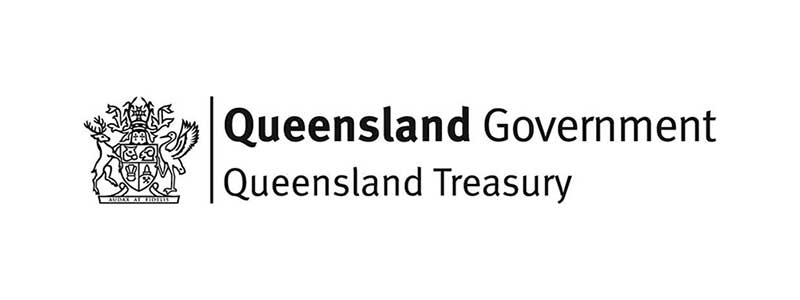







What housing markets does the Gold Coast attract and service?
While there may be a perception the Gold Coast is home to a mix of hedonistic youths and retirees, the most important household type that the Gold Coast actually attracts is young families.
What have been the recent drivers of growth and residential development?
In response to the steady flow of young families seeking detached, low-density housing, recent growth has been dominated by developments on the urban fringes, particularly in the North around Pimpama and Coomera.
Where will the growth be occurring?
Our model requires us to match forecast population with available dwellings. On the Gold Coast, this results in one of our key findings.
While the population continues to grow into the 2030s, driven by family household types, the sources of detached, low-density housing that have accommodated this growth in recent years start to decline as the Northern greenfield areas approach capacity.
Assuming the sugar-cane producing areas like Norwell aren't re-zoned for further greenfield development, these households will need to live elsewhere, and the most likely source of supply will be the higher-density dwellings already zoned for development along the coastal strip.
We explore this finding further below.
Key takeout: a transition to higher density dwellings
Our forecasts show that from the early 2030s, an increasing proportion of the Gold Coast's dwellings will be higher-density forms.
The chart below clearly shows the decline in dwelling growth in the greenfield SA3 of Ormeau-Oxenford as forecast developments come online and it reaches its identified capacity. This forces us to find alternative sources of new dwellings to distribute the sustained population growth forecast for the Gold Coast beyond 2030. This is evident in the growth of dwellings expected in the coastal SA3s of Southport, Surfers Paradise and Broadbeach-Burleigh, which start to increase from the early 2030s.
.png?width=1448&name=MicrosoftTeams-image%20(3).png)
Residential development forecasts
Our forecasts of residential development provide the expected location, timing and sequence of development of identified sites out to 2041. These forecasts give an independent and holistic view of both dwelling supply and demand across adjacent and connected regional housing markets.
Learn more here or contact our team for more information.
What we are monitoring
Our forecasting process is designed to be responsive to significant new information that materially changes our forecasts and may impact our clients' decision-making. On the Gold Coast, these are the things we will be keeping a watching brief on, as important assumptions underpinning our forecasts.
| Assumption | Notes |
|
The green wedge in the agricultural region around Norwell, Woongoolba and Gilberton remain undeveloped in the forecast period. |
Re-zoning of this area for residential development would change our view of how the forecast population is distributed at the sub-regional level. |
Place in focus: Southport
As the CBD of the Gold Coast, Southport gives us an important source of residential dwellings as the Greenfield development capacity in the north dries up.
With much of Southport zoned for a mix of residential, commercial and government use, we've had to make a call on what proportion will be developed as housing by considering precedents from other similar centres.
Your questions answered
These are some frequently asked questions we've had from our clients about our latest forecasts for the Gold Coast, along with some additional points of interest from our forecasters. If you would like to submit a question, please email locationdecisions@id.com.au
Have you accounted for the impacts of the 2032 Brisbane Olympic Games in your forecasts for the Gold Coast?


